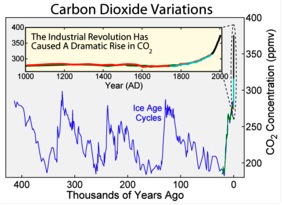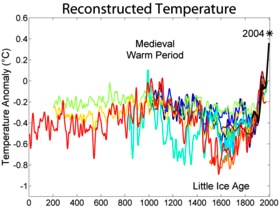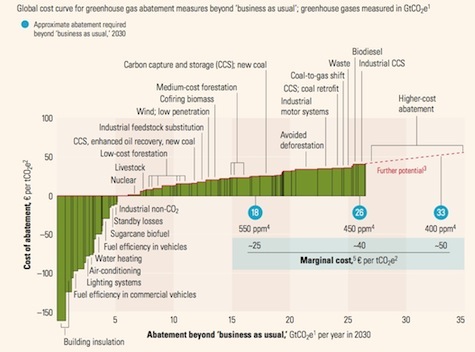

Source: Intergovernmental Panel on Climate Change
Today's CO2 levels are twice as high as any time in the last 500,000 years and are climbing fast. Temperatures are are tracking these trends.
The impacts of global warming are wide ranging if we do not change quickly.
Fact: Alaska's average temperature has already risen 4 degrees. Alaska's permafrost is melting and it's indigenous population's lives are threatened from threats to their food supply.
Fact: The arctic ice pack that reflects the sun's heat back into space is already 10% smaller and 40% thinner than in 1980. Polar bears have become endangered as the ice pack shrinks, forcing them to swim untenable distances.
Fact: Glacier National Park will have no more glaciers in 20 years.
Fact: Sea levels have already risen 4 to 8 inches. The EPA says "sea level is rising more rapidly along the U.S. coast than worldwide, and along the Gulf and Atlantic coasts, a one foot (30 cm) rise in sea level is possible by 2050. Thousands of square miles of Florida, the Carolinas and the Gulf Coast will be flooded. Low-lying countries like Bangladesh, parts of China and small islands in the Pacific will be inundated.
The US produces 20% of the world's greenhouse gases with just 5% of its population. We possess the ability to eliminate 10% of the world's greenhouse gases and set the standard for other nations while making our economy more competitive and cutting dependence on foreign oil.
McKinsey's landmark "supply curve" chart shows that energy savings technologies save money vs. business as usual - while alternative energy sources are more costly (above the line).

Source: McKinsey & Co.
Our short term payback is by rapidly improving our energy efficiency while working to reduce alternative energy costs in the future.


